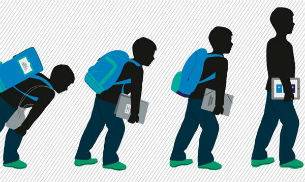- +91 22 23526372
- kgc@karangupta.com

Education and Career Counselor Karan Gupta takes you through the advantages, disadvantages and trends in Indian education
Indian students do very well wherever they go. Our education system prepares students to cope in the most challenging academic curricula anywhere in the world. Is this mainly because of our strong focus on exams and rote learning? Or is the focus on theoretical learning the right way to go?
Indian schools and colleges focus on teaching students theoretical concepts from day one. Students are encouraged to read text books and memorise important points. Right from early grades, the sheer volume of work given to the students is humungous, enabling students to cope under pressure. Constant quizzes, half yearly exams, and final exams ensure that students are always in touch with their text books. This kind of learning makes our students perform well in international competitive exams such as the GRE, GMAT, SAT, ACT and TOEFL as well as Indian competitive exams such as the CAT, CMAT, JEE and so on.
From an early grade, students are taught a class called ‘morals and ethics’. While it is debateable whether or not morals and ethics can be taught, the Indian education system ensures that children learn about morals and ethics and why they are important in our lives.
The Indian education system allows students to study technical and vocational courses, thereby making concession for students who cannot commit to long degree courses. This allows for students with limited financial resources to pursue short courses and find jobs early in their careers.
The main disadvantge of the Indian education system is the quality of education imparted at most schools. Many of the faculty employed are untrained and are not interested if the students learn or not. The main goal of the system is to get an entire batch of students to pass exams and move on to the next class – whether they learn or not is immaterial.
We have over 200,000 Indian students going abroad to study and many of them don't return to India, resulting in brain drain. What are some of the things that we can do improve to keep our talent here? One of the main reasons why students go abroad to study is because they don’t get admission in the best institutes in India. The admission acceptance rate at IIT is under 2% and under 1% at the IIMs. And these numbers are among the lowest in the world – Harvard’s acceptance rate is around 6%. If we manage to get more quality education institutes in India such as the IITs and IIMs, we will have a greater chance of retaining our bright talent.
We measure performance of students through exams. While exams are a great way to test what and how much a student has learned, it may not be ideal for everyone. Many students have exam anxiety and prefer to showcase their learnings through book reports, projects and class presentations. The exam craze and huge focus on grades and marks results in extreme anxiety for students and is the leading cause of suicide among our youth today. Several changes need to be done to ease the pressure on students including reinforcement from parents and teachers that grades are not everything and as long as a student gives his or her best, the end result is not critical.
A game changer in the Indian education system is the proliferation of digital technology. One of the most important advantages of digital technology in education is using adaptive and personalized learning for students. Schools provide students with laptops, tablets and even smart phones and students can use pre-programmed modules to learn at their own pace. This learning is often supplemented with video lectures and easy to understand notes.
With the Internet reaching even the most remotest of cities and towns in India, two way e learning can become a new model of teaching. Students in remote areas can have access to faculty located in metro cities. Faculty can have conversations with students and help them learn from the comforts of their homes.
Digital learning has now evolved into virtual reality (VR) and augmented reality (AR), thus taking learing to a whole new level. These technologies engage students and enhances their learning. They also allow for easier and more accurate student monitoring by the teachers. There are many apps and programs that use VR and AR and are changing the game for education and learning.
The author is an alumnus of Harvard Business School
